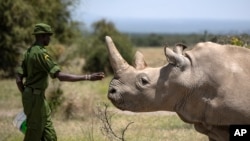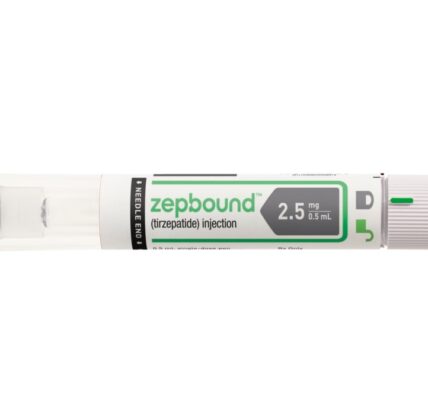“The use of embryo transfer in rhinos could potentially aid in the preservation of a critically endangered subspecies.”
Scientists report that they have successfully utilized embryo transfer to impregnate a rhinoceros, marking the first time this method has been used. This breakthrough could potentially lead to the preservation of the critically endangered northern white rhino subspecies.
Scientists conducted a study using the southern white rhino subspecies that is at a lower risk of becoming extinct. They produced an embryo in a laboratory using eggs and sperm collected from rhinos and then placed it into a surrogate mother who is also a southern white rhino at the Ol-Pejeta Conservancy in Kenya.
The group announced on Wednesday that the successful transfer of an embryo and resulting pregnancy serve as evidence that their concept is viable. They can now proceed with confidence to transfer embryos of the northern white rhino, a crucial step in their mission to prevent the extinction of this species.
Unfortunately, the team was made aware of the pregnancy after the surrogate mother passed away from a bacterial infection in November of 2023. The rhino contracted the infection through spores from the clostridium strain that were released into the soil by floodwater. The embryo was found during an examination conducted after the surrogate mother’s death.
However, the researchers remained hopeful about their discovery, although there are doubts among conservationists that the progress has been made in time to rescue the northern white rhino.
According to Thomas Hildebrandt, the head of the Department of Reproduction at BioRescue, recent findings provide proof that an embryo that is frozen, thawed, and created through in vitro fertilization can result in the birth of a new northern white rhino. This is the ultimate goal for the research team.
Approximately 20,000 southern white rhinos still exist in Africa. Both the southern white rhino subspecies and the black rhino species have been able to recover from a substantial decline in their numbers due to illegal hunting for their horns.
Unfortunately, there are currently only two remaining members of the northern white rhinoceros subspecies in existence.
Najin, who is 34 years old, and her offspring Fatu, who is 23, are unable to reproduce naturally, as reported by the Ol-Pejeta Conservancy, their place of residence.
Sudan, the final remaining male white rhino, was put to sleep in 2018 at the age of 45 due to complications related to his age. He was the father of Najin.
Researchers preserved his sperm and the sperm of four other deceased rhinos, with the goal of using them in vitro fertilization with eggs collected from female northern white rhinos. This process would result in embryos that would then be carried by southern white rhino surrogates.
Certain organizations focused on preserving wildlife have claimed that utilizing in vitro fertilization may not be enough to rescue the northern white rhino, as the regions where they naturally reside (Chad, Sudan, Uganda, Congo, and Central African Republic) have suffered significant damage due to human conflicts.
Critics argue that resources should be directed towards other highly endangered species that have a higher likelihood of survival.
According to Dr. Jo Shaw, CEO of Save the Rhino International, the recent news of a successful embryo transfer in a rhino is a promising development. However, it is unfortunate that this achievement occurred too late to revive a sustainable population of northern white rhinos.
Shaw said her group’s focus remains on addressing the two main threats to the five species of rhino around the world — poaching of rhinos for their horns and their loss of habitat to development.
She stated that our greatest opportunity is to collaborate with our various partners in order to provide rhinos with the necessary protection and habitat to flourish in their natural environment.
The group stated that they are still promoting natural reproduction to increase the population. They mentioned the Sumatran rhino as an example, with only 80 remaining. The group also reported that two calves were born last year through natural breeding.
Source: voanews.com




